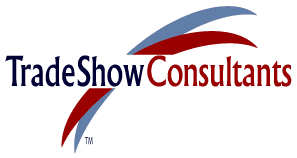





There is no doubt that the current financial meltdown has caused a serious need for marketing and sales functions in most corporations to be reevaluated, modified, and readjusted.
Most all tactics within a firm's marketing mix will need to be evaluated to determine which are the most effective in stimulating sales and closing business.
Trade show exhibiting is one of the most expensive and time consuming activities in the marketing/sales mix, and it often finds itself on the top of the list of the cost- cutting chopping block.
Because trade show exhibiting expenses include the immediate outlay of cash for exhibit space, exhibit materials, shipping, labor, transportation, travel, hotel expenses and daily expenses for those who work the booth, it is often easy to see where accounting-driven corporate management seeking to save money might decide that trade show exhibiting during tough financial times is just not worth it. Before that important decision is made, however, consider just how your presence — or absence — at important trade shows affects your business. Trying to save a few dollars today could compromise business tomorrow.
Consider this: If you drop out of a trade show that you have exhibited in before, what will your competitors say to your prospects and customers about your absence? The fact that you are not on the exhibit floor will provide your competitors with an excellent opportunity to simply and effectively cast doubt about your financial health and, more importantly, your ability to continue to sell and service your products. The exchange between your prospects and customers with your competitor could sound something like this: "Gee, I don’t know where they are. Maybe they're in serious financial difficulty and can't afford to exhibit. But not to worry, because we're here and ready to serve your every need.”
So before your company decides to drop out of any trade show, here are a few suggestions that will keep your customers, prospects, and competitors on the same page and make the most of the opportunities available to you on the show floor.
As long as you are on the exhibit floor, your people are available to conduct business as usual. If a question arises about the size of your booth — if in fact it is smaller compared to previous years — you can simply say that serving prospects' and customers' needs during these challenging economic times is more important than having a fancy exhibit.
Today’s lightweight, easy-to-set-up-and- dismantle exhibit materials provide the cost-conscious exhibitor with many opportunities to cut costs and maintain an excellent trade shows presence. When compared to custom exhibits, modular exhibit materials offer dramatic cost savings and provide a simple backdrop for creating a professional exhibit environment from which to conduct business.
Research local vendors to find an exhibit builder who will rent you an exhibit, including labor to transport it to and from the show and installation and dismantling services — all for one quoted price. Product could be shipped to the exhibit house and all materials could be delivered to the show for installation by workers who know the hall and what it takes to get in and out with few problems.
Instead of flying people from all over the country into the show city, try to man the booth with local sales, service, and/or office personnel. This will not only save money, but it will also give selected people an opportunity to represent the company in the exciting and often educational environment that trade shows offer.
When money is tight, you can expect fewer prospects and customers to travel long distances to attend a trade show. But as an exhibitor, you'll likely see more local attendees, so adjust your goals and objectives to maximize those opportunities.
While product is king, there are many non-product offerings that add value to a sale during tough economic times. Discounted or free extended warranties, free technical support, free product updates, a 30-day money-back guarantee, generous low-interest payment plans, free shipping, innovative trade-in allowances, lease option to own programs, and discounted service contracts are but a few ideas to add value to an exhibitor’s trade show presentation.
New business is tough to get, so every opportunity an exhibitor has to favorably impress a prospect/customer and obtain the sale is magnified. Now is the time to focus on providing excellent after- show customer service. Sales lead management is critical in responding to a prospect’s request for more product/service information, and the exhibitor who can effectively meet the challenges will get the sale.
The trade and consumer press will continue to attend trade shows seeking news, new products, and stories associated with the industry and exhibitors. Successful exhibitors always have complete press kits to hand out, and they always pre-arrange interviews with editors attending the show to foster post-show coverage, ensuring that their products, services and news are accurately reported.
Tough economic times can't last forever. Those exhibitors who now focus on servicing prospect and customer needs while adjusting their trade show exhibit programs to meet new economic challenges will survive. And not only that: they'll also emerge stronger and more successful than those who fail to see the light at the end of the tunnel.







All Rights Reserved | Trade Show Consultants